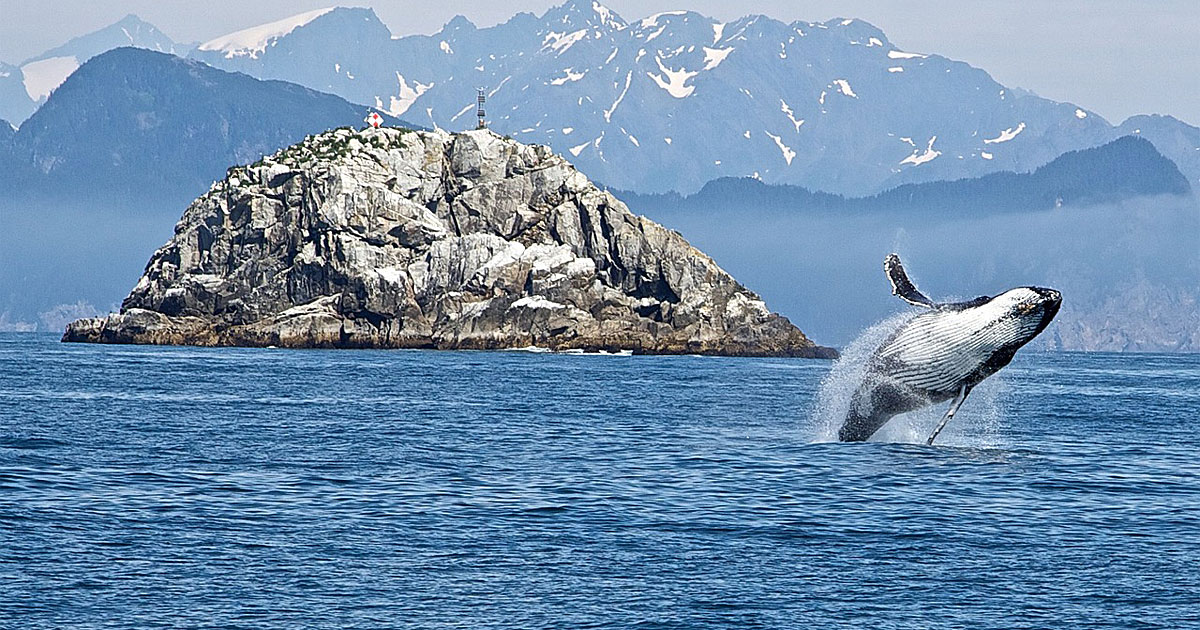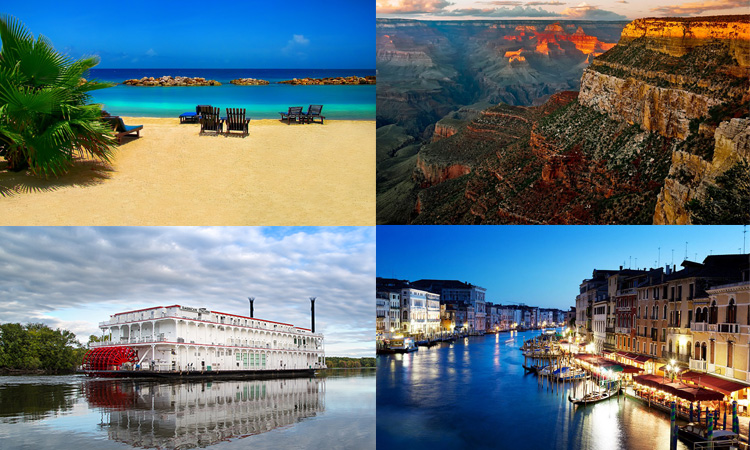Top Alaska Attractions
Anchorage
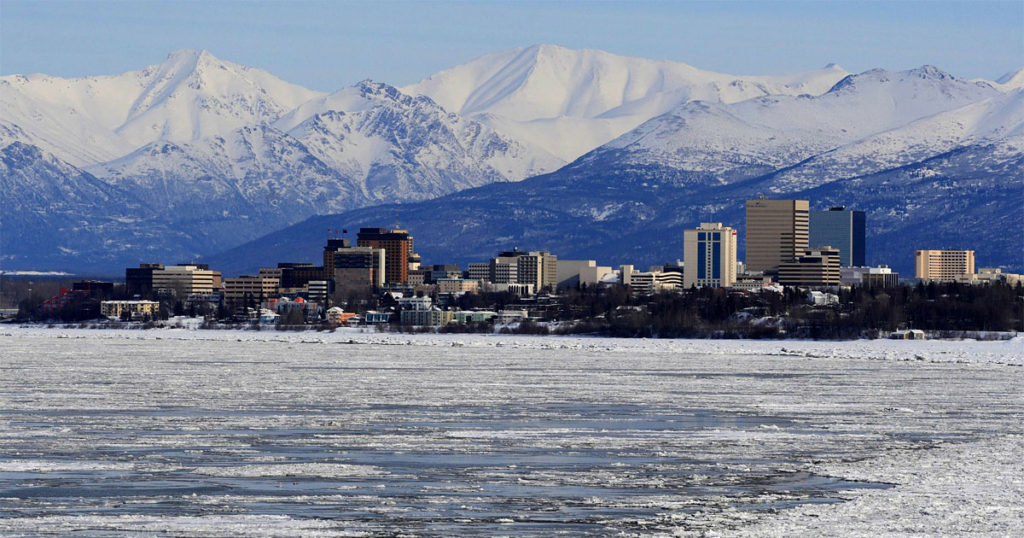 Alaska’s largest city is set between the towering Chugach Mountains and Cook Inlet. This cosmopolitan environment blends seamlessly with the traditional Alaskan setting. It offers plenty for wilderness lovers with six visible mountain ranges, and 183 miles of walking/hiking trails. It’s not just people who love Anchorage, 1,600 moose live within its city limits. Both visitors and natives enjoy fishing for salmon in downtown Anchorage at Ship Creek. Tourists can explore the Anchorage Museum and Native Heritage Center which are world class cultural enrichment centers.
Alaska’s largest city is set between the towering Chugach Mountains and Cook Inlet. This cosmopolitan environment blends seamlessly with the traditional Alaskan setting. It offers plenty for wilderness lovers with six visible mountain ranges, and 183 miles of walking/hiking trails. It’s not just people who love Anchorage, 1,600 moose live within its city limits. Both visitors and natives enjoy fishing for salmon in downtown Anchorage at Ship Creek. Tourists can explore the Anchorage Museum and Native Heritage Center which are world class cultural enrichment centers.
Barrow and the Arctic
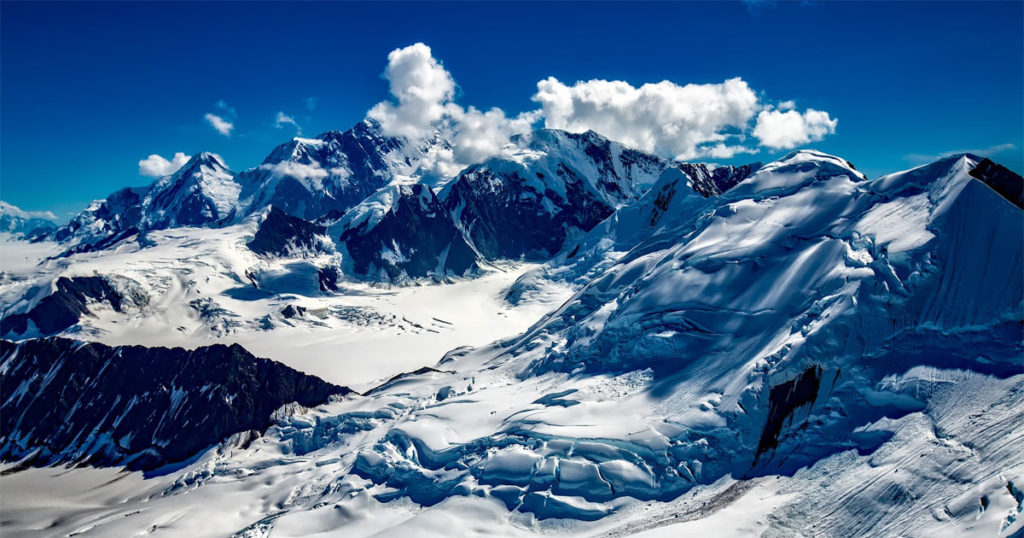 The Inupiat community of Barrow is the northernmost settlement in America and one of the largest Native American communities. The summer sun doesn’t set for 82 days shining continually from May 10 – August 2. A mere 1,291 miles from the North Pole, it’s the perfect place to view the midnight sun and dip your toe in the Arctic Ocean.
The Inupiat community of Barrow is the northernmost settlement in America and one of the largest Native American communities. The summer sun doesn’t set for 82 days shining continually from May 10 – August 2. A mere 1,291 miles from the North Pole, it’s the perfect place to view the midnight sun and dip your toe in the Arctic Ocean.
Denali National Park & Preserve
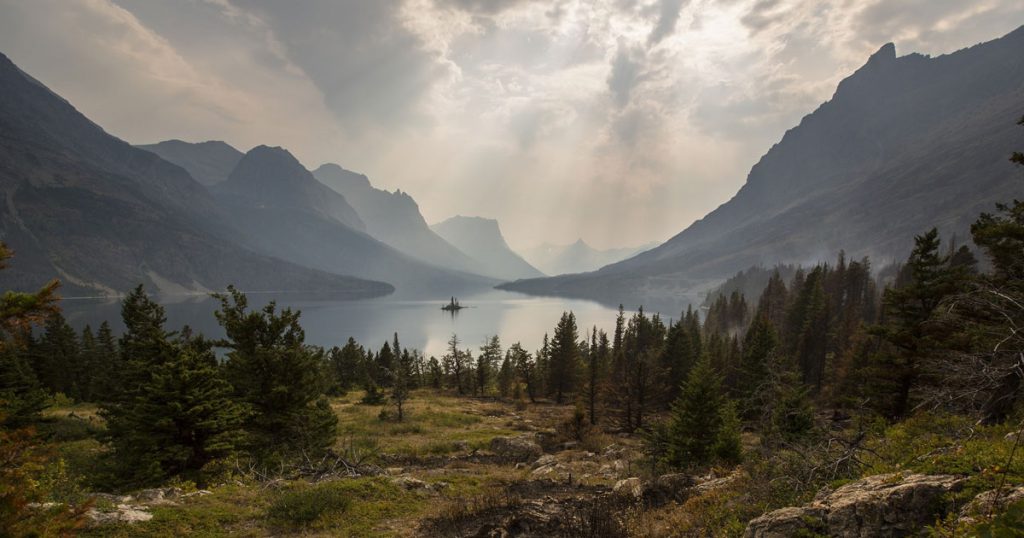 Stretching 6 million acres, this national park has one ribbon of a road (mostly unpaved) going 91 miles into the park. It’s vast, wild, and unspoiled boasting the largest continually protected ecosystem in the world with few signs of civilization. Visitors can see large animals at home in the wild such as caribou, bear, wolf, dall sheep, and moose. It’s also the home of Denali, North America’s highest peak at 20,360 ft.
Stretching 6 million acres, this national park has one ribbon of a road (mostly unpaved) going 91 miles into the park. It’s vast, wild, and unspoiled boasting the largest continually protected ecosystem in the world with few signs of civilization. Visitors can see large animals at home in the wild such as caribou, bear, wolf, dall sheep, and moose. It’s also the home of Denali, North America’s highest peak at 20,360 ft.
Fairbanks
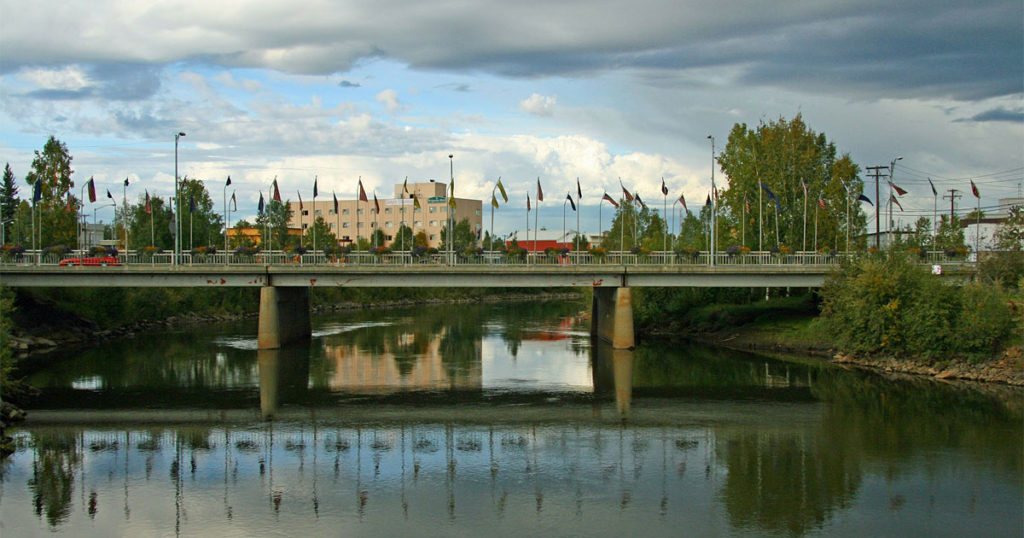 Frequently called the “Golden Heart of Alaska,” Fairbanks is the state’s second largest city. It’s home to the University of Alaska’s renowned Museum of the North and a variety of colorful frontier attractions including gold mining, Pioneer Park, and a nostalgic sternwheeler cruise. This city serves as the gateway to Alaska’s interior and arctic where both dogsleds and limousines meet. Temperatures in the summer can exceed 90 degrees F and have been known to drop below -50 degrees F in the winter.
Frequently called the “Golden Heart of Alaska,” Fairbanks is the state’s second largest city. It’s home to the University of Alaska’s renowned Museum of the North and a variety of colorful frontier attractions including gold mining, Pioneer Park, and a nostalgic sternwheeler cruise. This city serves as the gateway to Alaska’s interior and arctic where both dogsleds and limousines meet. Temperatures in the summer can exceed 90 degrees F and have been known to drop below -50 degrees F in the winter.
Glacier Bay National Park
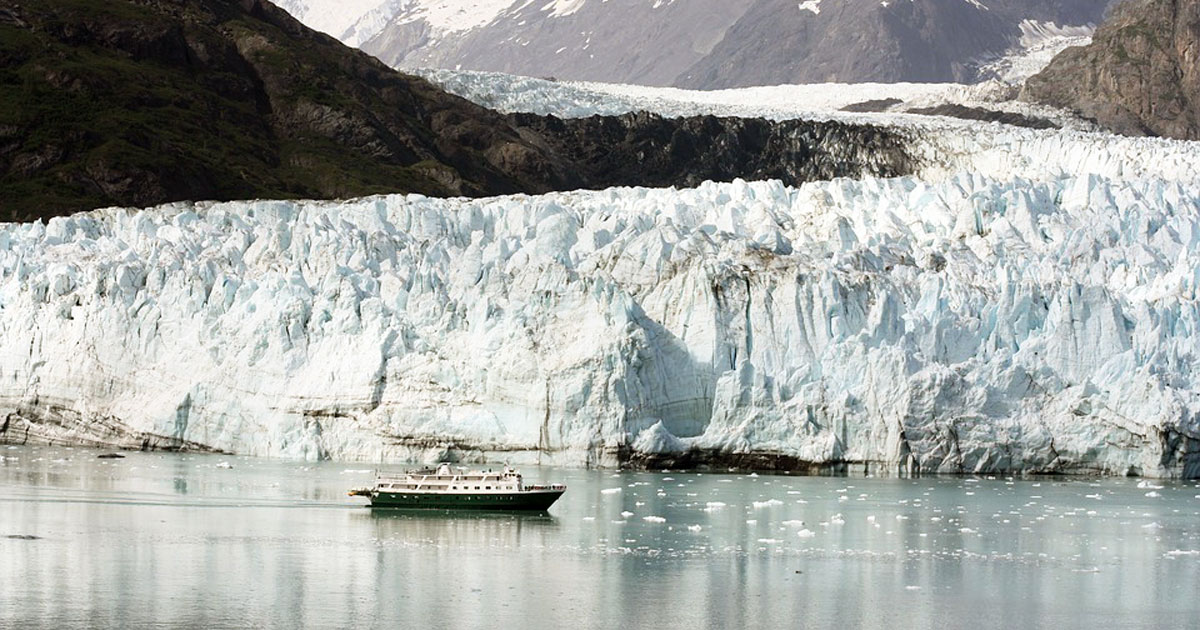 Undoubtedly the top destination for glacier viewing in Alaska, the park spreads over 3.2 million acres. This treasure trove of scenic coastal islands, narrow fjords, abundant wildlife, and fortress-like glaciers offers an inspirational glimpse of what mother nature does best. The park is home to the highest concentration of tidewater glaciers on the planet. Black bears are commonly seen in the forest areas and humpback whales can be found in the lower region of Glacier Bay.
Undoubtedly the top destination for glacier viewing in Alaska, the park spreads over 3.2 million acres. This treasure trove of scenic coastal islands, narrow fjords, abundant wildlife, and fortress-like glaciers offers an inspirational glimpse of what mother nature does best. The park is home to the highest concentration of tidewater glaciers on the planet. Black bears are commonly seen in the forest areas and humpback whales can be found in the lower region of Glacier Bay.
Homer
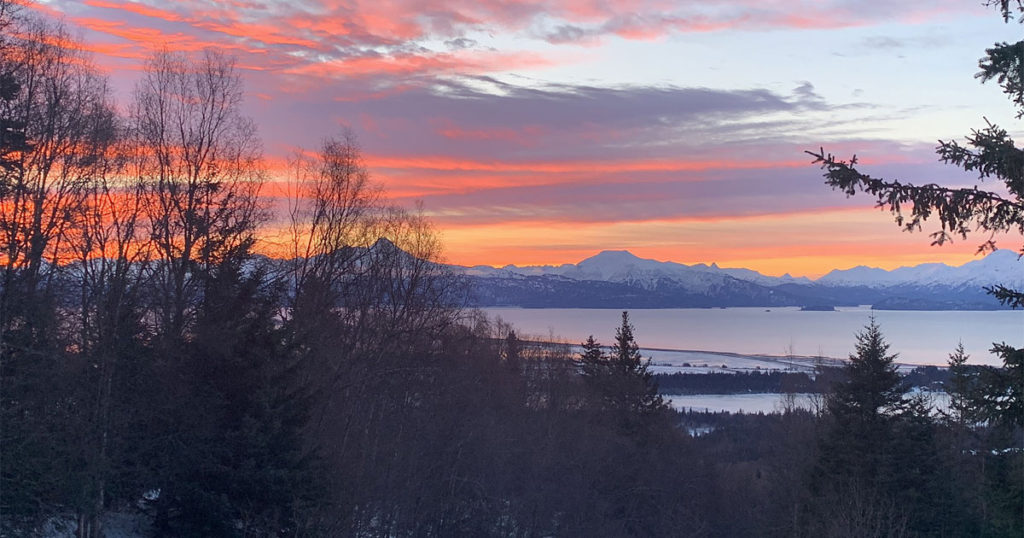 The lush Kenai Peninsula attracts bird-watchers, anglers, artists, and nature lovers. Situated on lovely Kachemak Bay, Homer is considered one of the top spots in Alaska for Halibut fishing. The Homer Spit is a long strip of land boasting quaint shops, vibrant art galleries, and seafood restaurants all overlooking breathtaking beaches.
The lush Kenai Peninsula attracts bird-watchers, anglers, artists, and nature lovers. Situated on lovely Kachemak Bay, Homer is considered one of the top spots in Alaska for Halibut fishing. The Homer Spit is a long strip of land boasting quaint shops, vibrant art galleries, and seafood restaurants all overlooking breathtaking beaches.
Hubbard Glacier
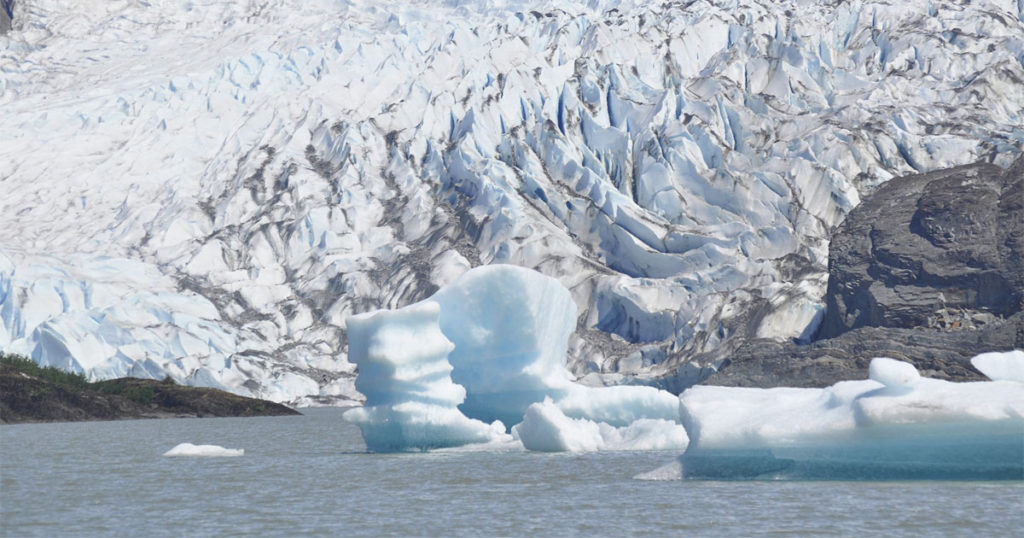 One of the most famous glaciers in the world, it stretches 76 miles to the sea at Yakutat Bay and Disenchantment Bay from its source in the Yukon. It was named in 1890 after Gardiner G. Hubbard (regent of the Smithsonian Institution and first president of the National Geographic Society) and is the longest tidewater glacier in Alaska; with an open calving face over 6 miles wide.
One of the most famous glaciers in the world, it stretches 76 miles to the sea at Yakutat Bay and Disenchantment Bay from its source in the Yukon. It was named in 1890 after Gardiner G. Hubbard (regent of the Smithsonian Institution and first president of the National Geographic Society) and is the longest tidewater glacier in Alaska; with an open calving face over 6 miles wide.
Icy Strait Point
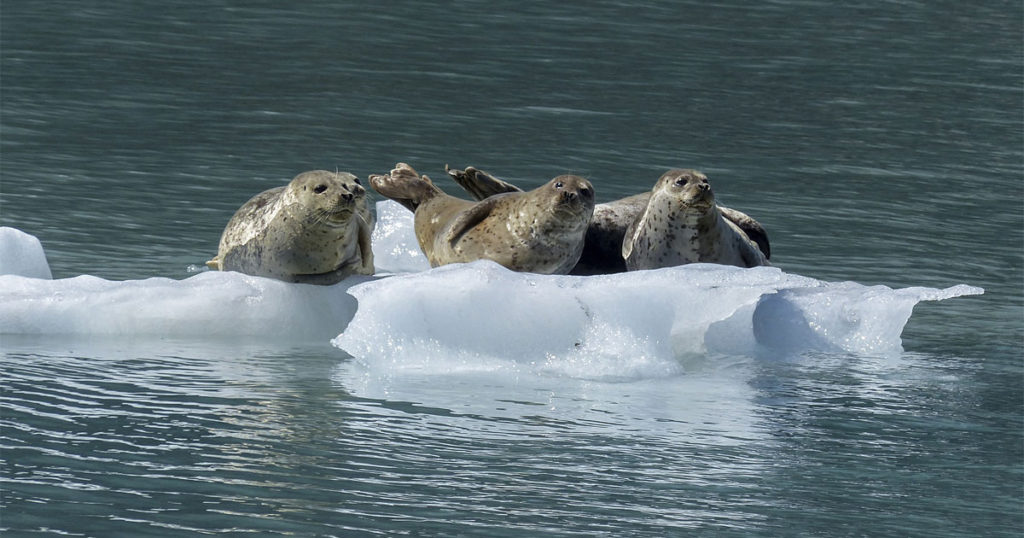 Located along Alaska’s Inside Passage, it is one of the most scenic and wildlife-rich ports. Icy Strait Point is located on waters frequented by whales and dolphins. It’s also surrounded by forested shorelines where bears come to forage. A popular stop for cruise ships, visitors can enjoy various tours and see the restored salmon cannery.
Located along Alaska’s Inside Passage, it is one of the most scenic and wildlife-rich ports. Icy Strait Point is located on waters frequented by whales and dolphins. It’s also surrounded by forested shorelines where bears come to forage. A popular stop for cruise ships, visitors can enjoy various tours and see the restored salmon cannery.
Juneau
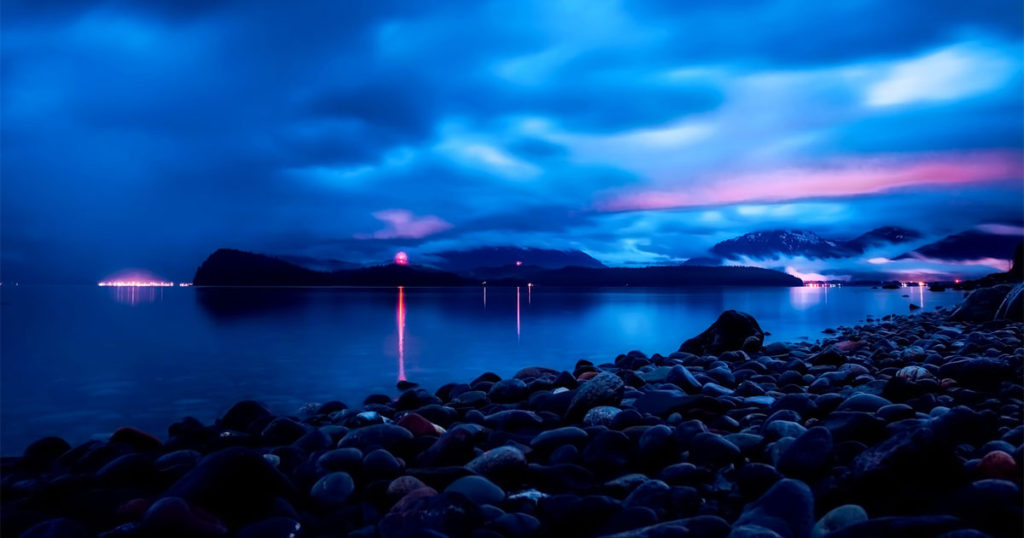 Alaska’s proud capital is nestled between towering mountains and the tidewaters of Gastineau Channel. It is the only state capital in the nation not accessible by road and can only be reached by plane or boat. It is also the only city to have a glacier in the city limits; the massive Mendenhall Glacier. For nature lovers the whale watching out of Auke Bay is some of the best in the world. It is truly a hub where nature meets city flare.
Alaska’s proud capital is nestled between towering mountains and the tidewaters of Gastineau Channel. It is the only state capital in the nation not accessible by road and can only be reached by plane or boat. It is also the only city to have a glacier in the city limits; the massive Mendenhall Glacier. For nature lovers the whale watching out of Auke Bay is some of the best in the world. It is truly a hub where nature meets city flare.
Kenai Peninsula – Seward
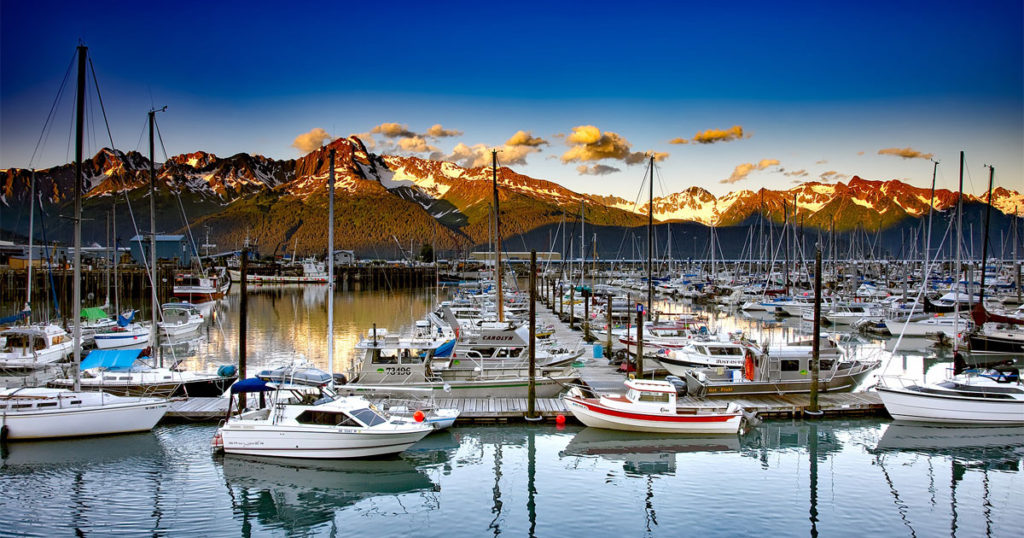 This southern port city is on the inlet of the Kenai Peninsula. It’s home to the Alaska SeaLife Center which showcases a one-of-a-kind combination of public education, animal rehabilitation, conservation, marine research, and knowledge-enriching entertainment. This world-class, 115,000-square-foot facility was built with funds from the 1989 Exxon Valdez Oil Spill and serves to remind visitors of the importance of maintaining Alaska’s marine ecosystem.
This southern port city is on the inlet of the Kenai Peninsula. It’s home to the Alaska SeaLife Center which showcases a one-of-a-kind combination of public education, animal rehabilitation, conservation, marine research, and knowledge-enriching entertainment. This world-class, 115,000-square-foot facility was built with funds from the 1989 Exxon Valdez Oil Spill and serves to remind visitors of the importance of maintaining Alaska’s marine ecosystem.
Ketchikan
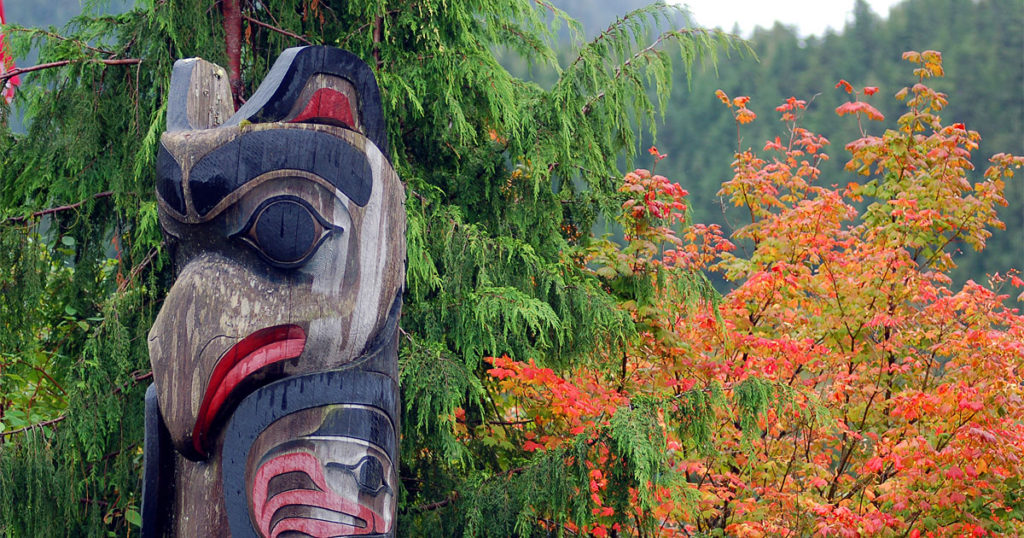 Often described as the “Alaska’s First Town,” it’s located within the heart of the Tongass National Forest. Founded as an Indian fishing camp, it’s a mecca for sportfishing and renowned for its ancient and contemporary Native American culture. Ketchikan is also the well-known gateway to visit the glorious Misty Fjords where visitors can see icy blue lakes, waterfalls, and glacial valleys.
Often described as the “Alaska’s First Town,” it’s located within the heart of the Tongass National Forest. Founded as an Indian fishing camp, it’s a mecca for sportfishing and renowned for its ancient and contemporary Native American culture. Ketchikan is also the well-known gateway to visit the glorious Misty Fjords where visitors can see icy blue lakes, waterfalls, and glacial valleys.
Kodiak
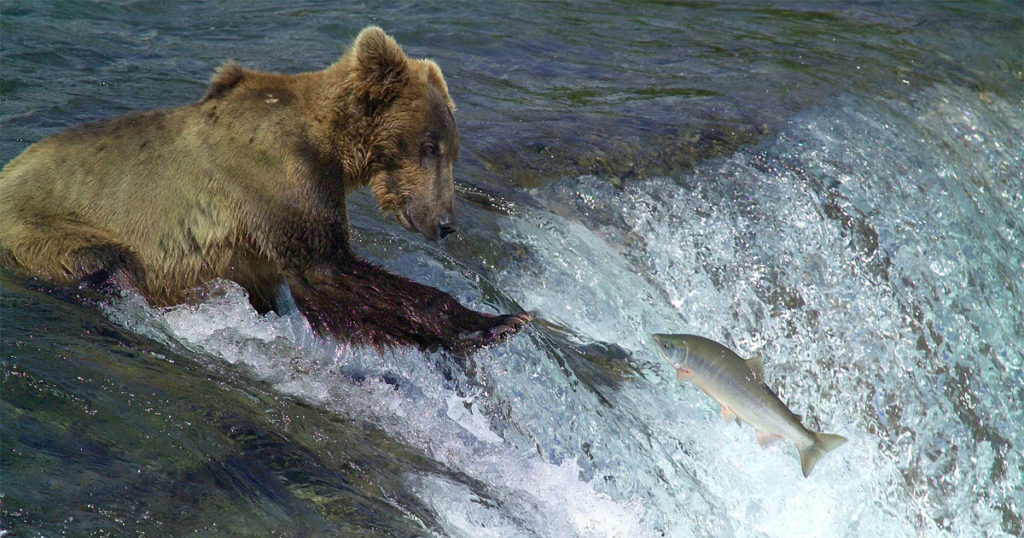 Located in Southwest Alaska, the principal town on Kodiak Island is the home of Alaska’s largest fishing fleet. The Kodiak National Wildlife Refuge covers two-thirds of Kodiak Island offering protected habitat for world famous Kodiak Brown Bears – the world’s largest land carnivore. Males can reach up to 1,400 lbs. and stand up to 9.8 ft. on their hind legs.
Located in Southwest Alaska, the principal town on Kodiak Island is the home of Alaska’s largest fishing fleet. The Kodiak National Wildlife Refuge covers two-thirds of Kodiak Island offering protected habitat for world famous Kodiak Brown Bears – the world’s largest land carnivore. Males can reach up to 1,400 lbs. and stand up to 9.8 ft. on their hind legs.
Prince William Sound
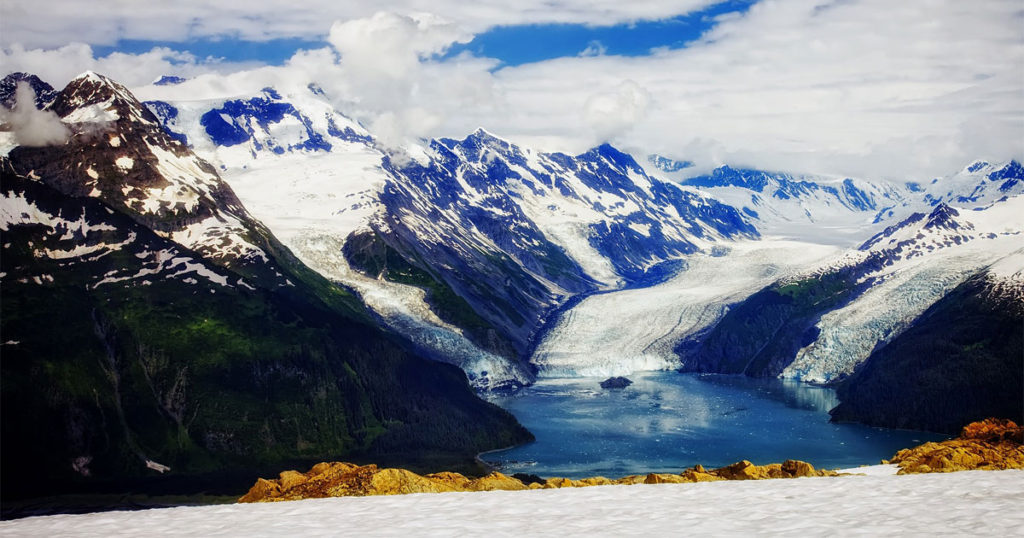 This body of water encompasses 10,000 square miles of protected waterways, islands, fjords, and glaciers. College Fjords surrounds you with glaciers on three sides featuring 16 tidewater glaciers with Harvard Glacier standing at the head of the fjord. Access to Whittier is through a 2.5 mile WWII era tunnel that is the longest dual use highway/rail tunnel in North America.
This body of water encompasses 10,000 square miles of protected waterways, islands, fjords, and glaciers. College Fjords surrounds you with glaciers on three sides featuring 16 tidewater glaciers with Harvard Glacier standing at the head of the fjord. Access to Whittier is through a 2.5 mile WWII era tunnel that is the longest dual use highway/rail tunnel in North America.
Prudhoe Bay
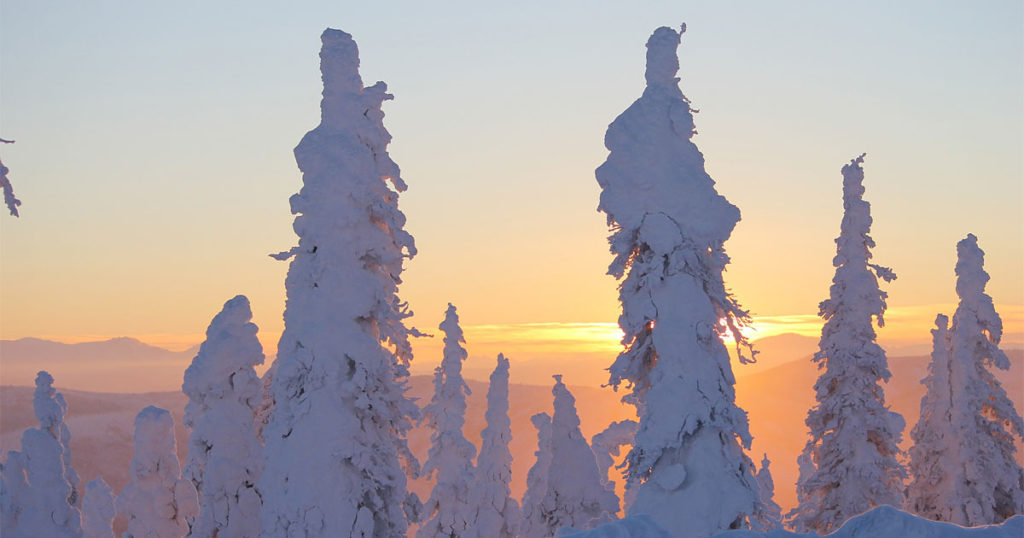 On the shore of the Arctic Ocean, this bay is the location of the North Slope oil fields and the beginning of the massive Trans-Alaskan pipeline. It is the start of the Dalton Highway featured in the popular TV series “Ice Road Truckers.”
On the shore of the Arctic Ocean, this bay is the location of the North Slope oil fields and the beginning of the massive Trans-Alaskan pipeline. It is the start of the Dalton Highway featured in the popular TV series “Ice Road Truckers.”
Skagway
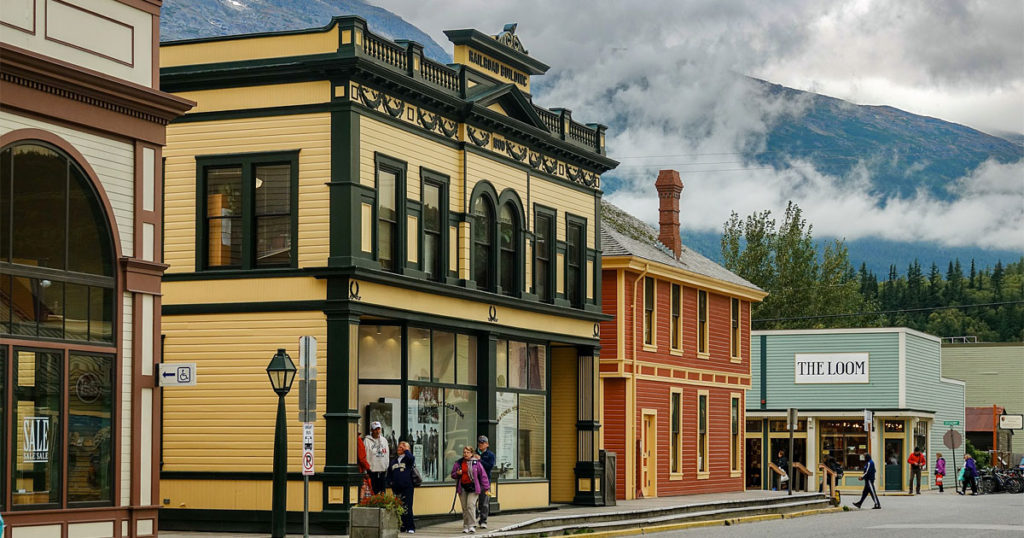 Born of the Klondike Gold Rush of 1898, Skagway was a riotous boomtown full of saloons, gambling dens, and more than 20,000 prospectors on their quest for gold. Those days are recreated in the false fronted buildings of the Klondike Gold Rush National Historic Park. The narrow gauge White Pass and Yukon Route Railway offers a narrative of those days as well as a full pallet of spectacular scenery.
Born of the Klondike Gold Rush of 1898, Skagway was a riotous boomtown full of saloons, gambling dens, and more than 20,000 prospectors on their quest for gold. Those days are recreated in the false fronted buildings of the Klondike Gold Rush National Historic Park. The narrow gauge White Pass and Yukon Route Railway offers a narrative of those days as well as a full pallet of spectacular scenery.
Talkeetna
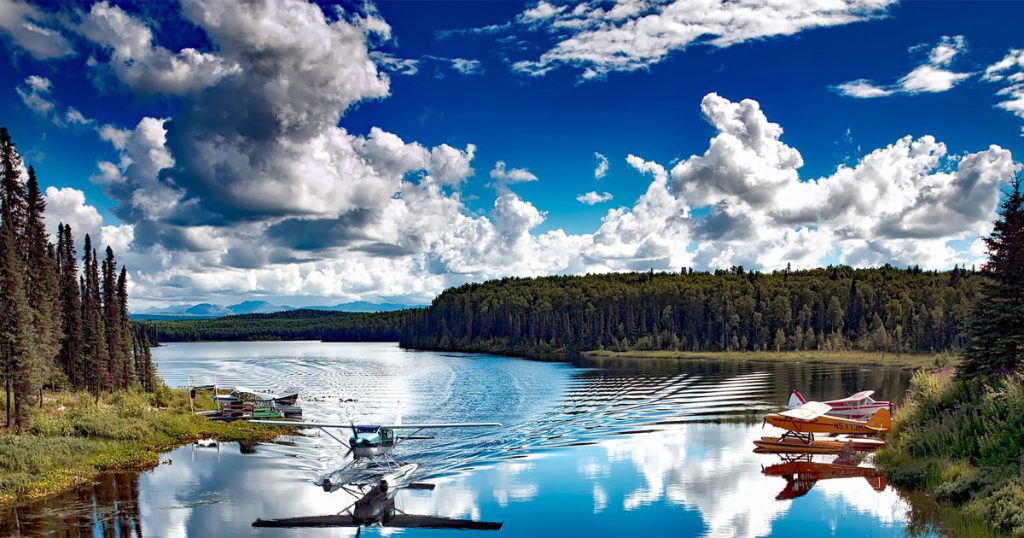 The historic and quaint village of Talkeetna is nestled at the base of North America’s tallest peak, Denali (Mt. McKinley) and boasts outstanding panoramic views of the Alaska Range. It is the staging site for mountaineers as they begin their climb up Mt. McKinley. At the end of Main Street, three rivers converge: the Susitna, Chuitna, and Talkeetna. Visitors can find great salmon fishing here or take a guided jet boat tour, rafting trip, or riverboat excursion on the 200 miles of breathtaking waters.
The historic and quaint village of Talkeetna is nestled at the base of North America’s tallest peak, Denali (Mt. McKinley) and boasts outstanding panoramic views of the Alaska Range. It is the staging site for mountaineers as they begin their climb up Mt. McKinley. At the end of Main Street, three rivers converge: the Susitna, Chuitna, and Talkeetna. Visitors can find great salmon fishing here or take a guided jet boat tour, rafting trip, or riverboat excursion on the 200 miles of breathtaking waters.
Tracy Arm
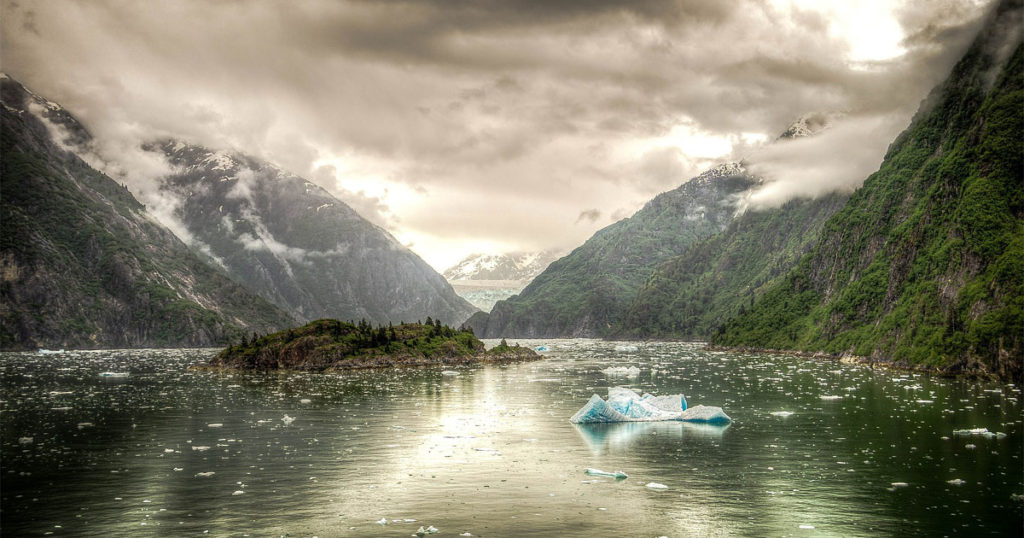 This fjord near Juneau showcases rugged granite cliffs that rise straight from the water’s edge. Visitors can explore 26 miles of astounding scenery ending at the twin Sawyer Glaciers. It is located about 45 miles south of Juneau and is named after a Civil War general named Benjamin Franklin Tracy.
This fjord near Juneau showcases rugged granite cliffs that rise straight from the water’s edge. Visitors can explore 26 miles of astounding scenery ending at the twin Sawyer Glaciers. It is located about 45 miles south of Juneau and is named after a Civil War general named Benjamin Franklin Tracy.
